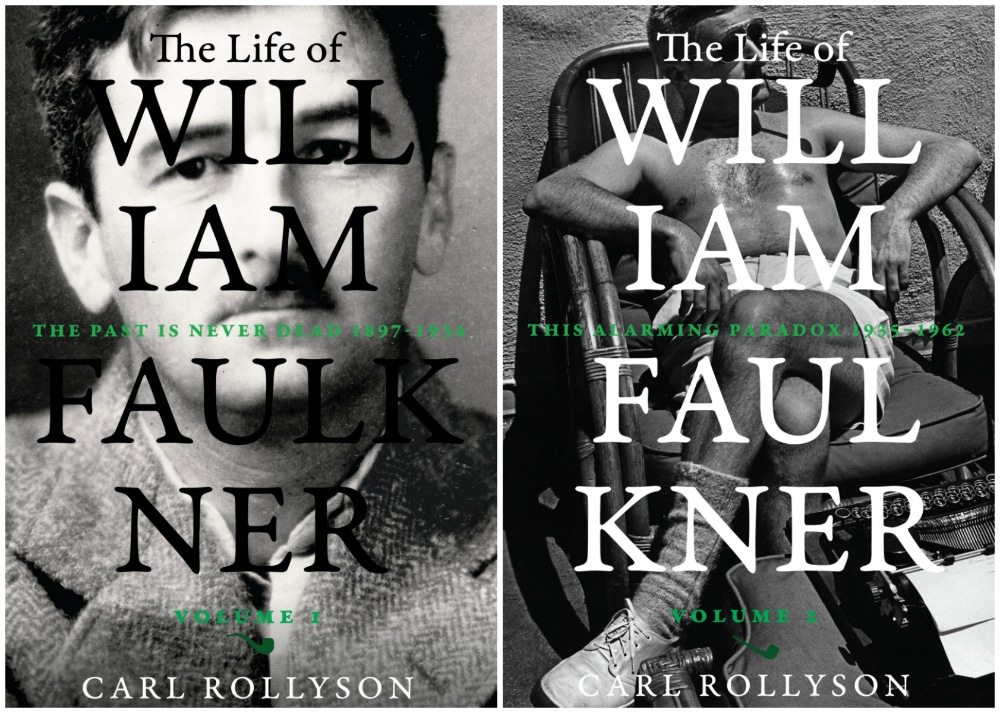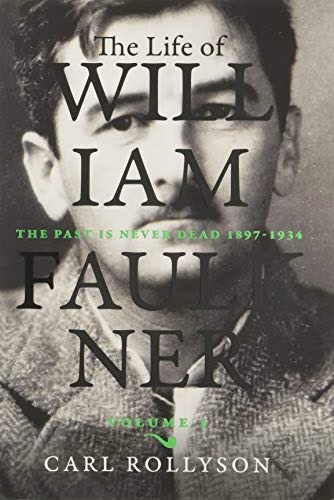By Allen Boyer

The Harris tweed jacket, the one that William Faulkner wore in 1929 for the cover photo of “The Sound and the Fury,” had inside pockets that held two bottles of bootleg gin.
That may be the least suspected, least surprising detail supplied by Carl Rollyson in a magisterial, rambling, fascinating biography of Mississippi’s most eminent writer, a book that left the presses amid an obscuring pandemic.
Rollyson gladly acknowledges the debts that Faulknerians owe each other. Joseph Blotner broke ground but suppressed facts (he told “hundreds of little white lies,” Faulkner’s daughter remarked). Carvel Collins collected more than a hundred archival boxes of materials.
Among other scholars, Rollyson writes:
“Anyone wishing to understand Faulkner’s southern background and family history had better read Joel Williamson. For acute psychological analysis, Fred Karl is the go-to biographer. Judith Sensibar restores Estelle Faulkner to an importance that other biographers occluded … No one writes more incisively about Faulkner than Philip Weinstein.”
Readers in Oxford will note other names in Rollyson’s list of sources: Will Lewis, Tommy Freeland, Larry Wells, Dean Faulkner Wells and Sandra Baker Moore.
Rollyson has a reporter’s eye for detail and a vivid way of narrating scenes. The William Faulkner of this biography is as likely to be found in Hollywood, Manhattan, New Haven, or Charlottesville, as in his postage-stamp of native soil. Estelle Oldham Faulkner figures prominently, and from a middle distance in which William and Estelle’s marriage seems as troubled as the marriages Raymond Carver knew so well, pairings of damaged souls who too often drink together. Faulkner’s time in Hollywood gets its full due.
This biography closes in a sanatorium in Byhalia, in July 1962. Faulkner had been admitted – he was “quiet, tractable, humble,” a doctor wrote, among family members, nurses, and orderlies – and he endured a long evening, drawing in on himself. There were hourly treatments, vitamin injections, half-ounce glasses of alcohol, anti-nausea doses, muscle relaxant, a sedative, and three “egg flips,” mixtures of eggs and cream.
Two days before, Faulkner had told Mac Reed, “I been aimin’ to quit all this.” Not long after midnight, he sat up, groaned, and collapsed, felled by a heart attack. In Rollyson’s summary of his final hours, the writer who believed history was eternal has never seemed more mortal, or more human.
“The Life of William Faulkner I: The Past Is Never Dead – 1897-1934.” By Carl Rollyson. University of Virginia Press. 476 pages. $34.95.
“The Life of William Faulkner II: This Alarming Paradox – 1935-1962.” By Carl Rollyson. University of Virginia Press. 622 pages. $34.95.
Allen Boyer is a Book Editor with HottyToddy.com. A native of Oxford, he works and writes in New York City.


